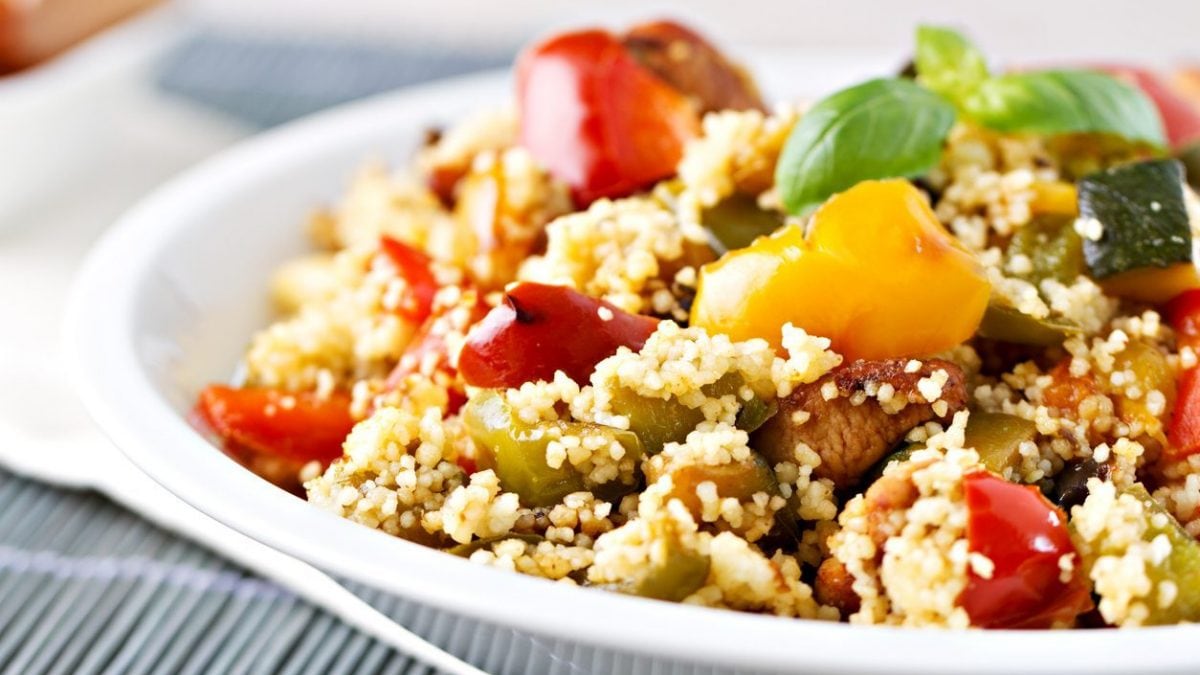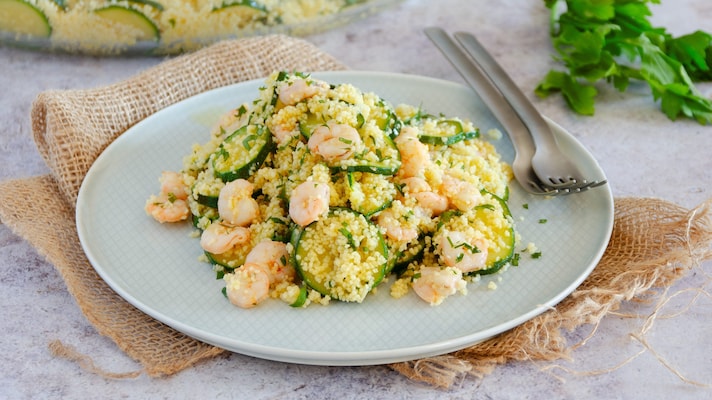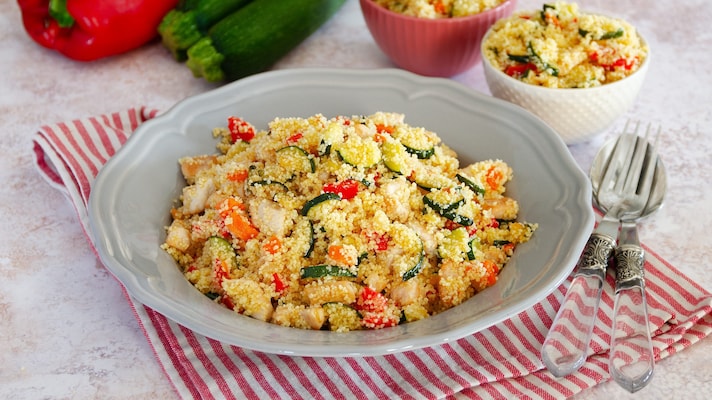
Couscous is an ancient and versatile food, originating in Berber cuisine and widespread throughout North Africa, from Morocco to Tunisia. Due to historic Arab migrations within the Mediterranean basin, it became part of the gastronomic tradition of Western Sicily in Italy, particularly in the province of Trapani. It consists of grains of durum wheat semolina —which can be fine, medium, or coarse—that are ground with water and then steamed in batches in a special pot called a couscoussiera.
In the classic version, preparing this dish is lengthy and requires great skill: to optimize time, pre-cooked couscous is now commonly used, available commercially in various varieties, including whole wheat, spelt, corn, and gluten-free, to meet various dietary needs. This means that the grain has already been cooked and dried, and must be rehydrated before being consumed in its many forms: in broth or dry, accompanied by vegetables, meat (from Moroccan lamb to chicken), and fish, or sweetened with dried fruit, spices, and honey. An ideal ingredient for digestible and nutritious meals: let's see how to make it quickly and easily.
Absorption Method
This is probably the most popular method: some details may vary depending on the instructions on the package, but absorption is usually easy and intuitive. Just be careful to respect the ratio between the amount of semolina and the amount of liquid added, which is generally 1:1, so the same dose: for a glass of couscous, use a glass of water or broth (meat, fish, or vegetable). The grains, once soaked, will almost triple their weight and volume. How should you proceed?
- Bring the water or broth to a boil and meanwhile place the couscous in a large bowl, add a pinch of salt and a tablespoon of extra virgin olive oil.
- Pour the liquid over the couscous and cover with cling film or a lid to keep the heat and humidity in: leave to rest for 5 to 10 minutes.
- After the required time, the couscous has absorbed all the liquid and should be gently fluffed with a fork. At this point, it can be seasoned according to the recipe.
The most common alternative is to boil the right amount of water in a pan with oil and salt, turn off the heat and then add the couscous.

Steaming Method
A variation that mimics the original way couscous is cooked is steaming. This method isn't particularly difficult, but it just takes longer: the key is that the liquid and the food never come into contact to ensure proper hydration.
- With the steamer: place the cereal inside the container with cold water in equal proportions, turn on the steamer and leave to cook for 20-25 minutes, then add a spoonful of extra virgin olive oil and then separate the couscous grains.
- Without a steamer: Get a pot and a fine-mesh basket. If you don't have one, you can line the bottom of your basket with breathable cheesecloth to prevent the grains from falling out. Bring the liquid (water or broth) to a boil in the pot and place the couscous in the basket. Cover with a lid and place it over the pot. Cook for 30 minutes.
The Microwave Method
The appliance becomes an ally when time is really limited, and no, in this situation the air fryer is no help. We suggest cooking it like this: place couscous and cold water in a container in a ratio of 2:3 (for example, 100 ml of water to 150 grams), cook for one minute on high power, then add the remaining water and cook for another minute. Finally, add the oil and salt and gently separate the grains.

How Much Couscous Should You Eat?
Precooked couscous is an ingredient that can be used in a variety of ways in the kitchen: as a main dish, a side dish like basmati rice, but also as a filling for vegetables, from cold tomatoes to baked eggplants and delicious meatballs. Deciding how much to use depends primarily on the function this food plays in the meal: an ideal portion for an adult eating it as a main course is around 70-80 grams raw, which corresponds to about 180-200 grams cooked.
As a side dish, however, aim for around 50-60 grams per diner. Traditional couscous is made from durum wheat semolina: complex carbohydrates derived from cereals that in a healthy and balanced diet combine perfectly with proteins of animal origin (prefer white meat over red meat) or vegetable origin (for example legumes, including tofu) and vegetables, which provide fibers and micronutrients, but also with fresh cheeses, such as mozzarella, to create fresh and creative salads.
;Resize,width=767;)
